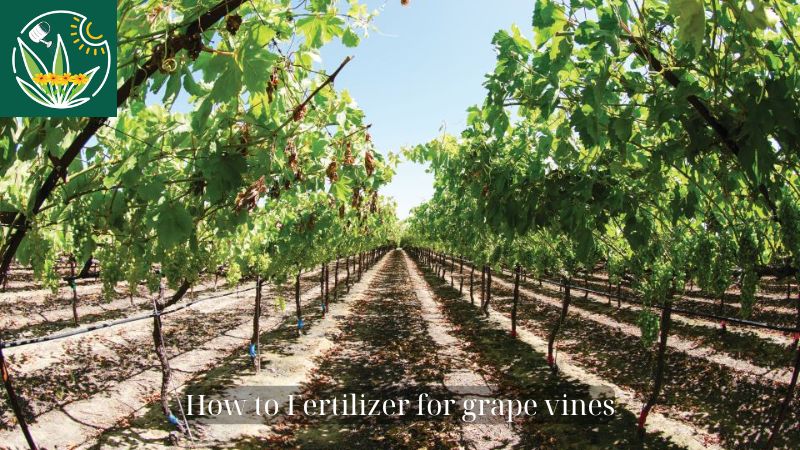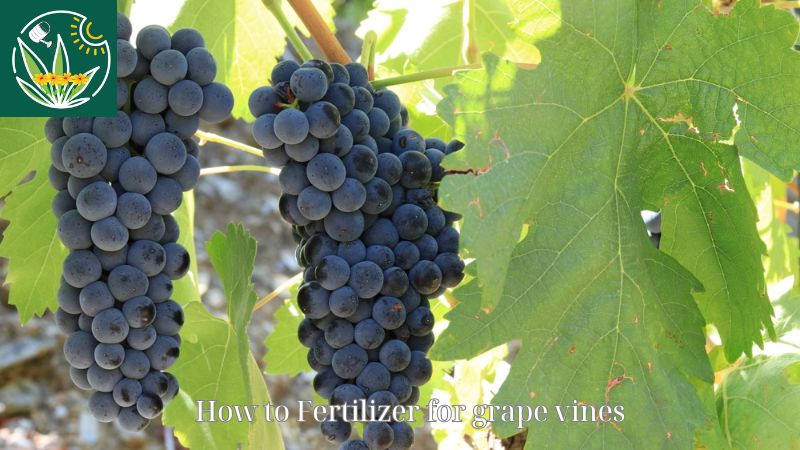Grapevines are not only a familiar plant in home gardens but also play an important role. Fertilizer for grape vines have high productivity, analyzing and understanding the needs of the plant is extremely necessary.
In this article, tree02.com will explore methods and techniques for analyzing grapevines, from assessing soil quality, checking nutrient supply, to identifying and solving pathological problems. A deep understanding of these factors will help optimize the growing and care process, bringing the most delicious and quality grape products.
Assessing the Soil
Before fertilizing your vines, you should assess the condition of your soil.
Soil Preferences
Vineyards are not particularly picky about soil, and can tolerate a wide range of soil types. However, they prefer well-drained, fertile soils that are rich in organic matter. They do not like soil that is boggy or constantly wet. When growing in heavy clay or poor soils, mixing in some organic matter in the form of aged compost or well-rotted manure can be beneficial.
Soil pH is important!
Grapevines grow best in acidic to slightly acidic soils, with a pH of 5.5 to 6.5. If you are unsure about the pH of your soil, you should have it tested.
Testing the pH of your soil
Soil pH is a measure of the alkalinity or acidity of the soil and is measured on a scale of 1-14, with 7 being neutral. Any reading below 7 indicates acidic soil conditions and any reading above 7 indicates alkaline soil conditions. If you are unsure about the pH of your soil or whether it is suitable for growing grapes, you should have the pH tested in your growing area.
Your local extension service may offer soil testing services, or you can test your soil pH yourself with an inexpensive soil pH test probe. To raise the pH (make the soil more alkaline), you can add pelleted limestone to the soil. To lower the pH (make the soil more acidic), you can apply Soil Sulfur, Aluminum Sulfate, or Iron Chelate. Adding compost to the soil at planting time and mulching regularly can also help increase the acidity and maintain acidic soil conditions.
How to Fertilizer for grape vines
At Planting Time
At planting time, incorporate an organic grapevine fertilizer according to label directions and/or mix in some organic matter, such as composted manure or mushroom compost, at a rate of 25% of the native soil removed from the planting hole. Compost is especially beneficial for improving heavy clay soils that can retain too much water during the wet season and become brick-hard during the dry season. Mix the composted organic matter thoroughly with the native clay at a 50/50 ratio.

When to Fertilize Grape Vines
Fertilize established vines in early spring when new growth begins to emerge and again about a month later, but do not fertilize after midsummer. Fertilizing too late in the season will promote new, tender growth that is susceptible to early frost or freeze damage, which can affect the overall health of the vine.
Fertilizing Grapevines
Generally, grapevines respond well to a balanced fertilizer such as a 10-10-10. However, whenever I fertilize a plant that produces fruit that I plan to eat, I use an organic fertilizer and fertilize according to the label instructions with an organic fertilizer for plants.
I also add a 2-inch layer of pine straw or shredded wood mulch around the vines. As these mulches decompose, they add organic matter to the soil that your grapes will love. Avoid using fresh sawdust or wood chips until they have been composted for at least 6 months.
Note: Avoid over-fertilizing your grapevines, as too much fertilizer can easily damage the plant. If you use an organic fertilizer, you won’t have to worry about burning the plant.
How to Water Grapevines
Grapes prefer moist but well-drained soil. Although moderately drought tolerant, they will enjoy moisture when the grapes are on the vine, but do not like soil that is constantly soggy or wet, which can cause problems.
At Planting Time
Immediately after planting the vine, soak the soil in the planting area, including the root ball, to the depth of the planting hole. Using a Root Stimulator will provide an extra boost to encourage early root formation and stronger root growth. The Root Stimulator reduces transplant shock and promotes a greener, healthier plant.
During the First Active Growing Season
In average garden soil, you do not need to water newly planted vines every day. Often this will result in soggy or wet soil that can lead to root rot and other plant diseases. In the absence of adequate rainfall, water only as needed to keep the root ball and surrounding soil moist. Apply an organic mulch to help retain moisture and reduce hand watering.
Remember that deep soaking less frequently is much better than just watering a little around the vine every day. Vines grown during the dormant season, when they are not growing vigorously and evaporation is slower, will need much less water. So be careful not to overwater in the winter!
Once established, the vine will need less water, but will like the soil to be consistently moist when the grapes are on the vine. Keep the vine well mulched to help retain moisture.
Conclusion
In short, grapevine analysis is not only an important step in the cultivation process but also an art that requires meticulousness and experience. Insights from the analysis will help farmers not only optimize productivity but also improve the quality of grapes, contributing to protecting the brand of grape products in the market.
Hopefully, through this article, readers will find useful knowledge and apply it effectively in practice, thereby building a sustainable and developed agriculture.






